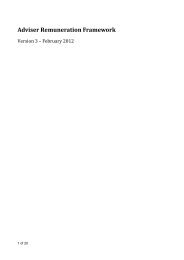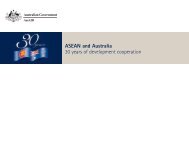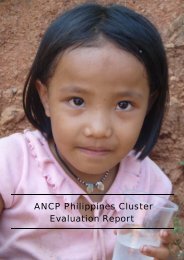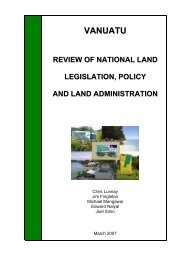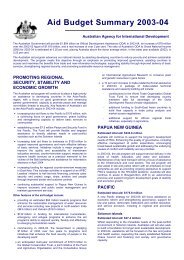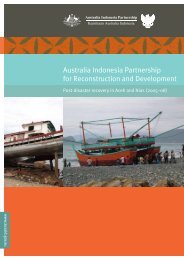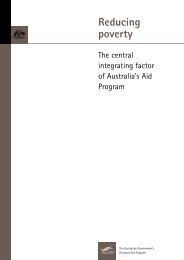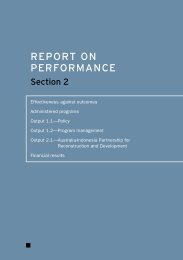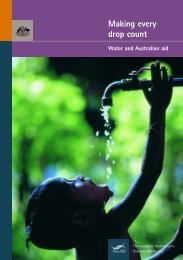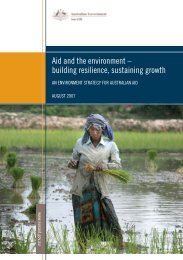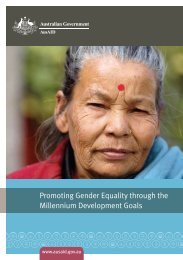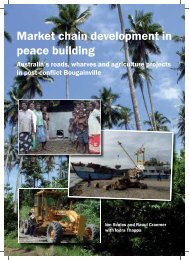Australian Aid to PNG - AusAID
Australian Aid to PNG - AusAID
Australian Aid to PNG - AusAID
Create successful ePaper yourself
Turn your PDF publications into a flip-book with our unique Google optimized e-Paper software.
2.2 Macroeconomic PerformanceThe 1975 <strong>to</strong> 1989 period was characterised by relative economic stability butpoor international competitiveness and associated low economic growth. Thisphase of development was brought <strong>to</strong> an end in 1989 as the economy faced amajor crisis following the closure of the Panguna mine in Bougainville andassociated civil unrest, and a large decline in agricultural export prices. The firststructural adjustment program was implemented at this time and, as oil andmining revenues grew quickly, the management of mineral revenues became anincreasingly important issue. A lack of fiscal discipline and poor progress onstructural reforms culminated in a balance of payments crisis in 1994 and led <strong>to</strong>the adoption of a new exchange rate regime. At the same time, a shift fromdirect budget support <strong>to</strong> programmed assistance was well underway.Since 1995, a (managed) flexible exchange rate regime has been in place andthe move from budget support <strong>to</strong> programmed assistance has been completed.Reforms made with the adoption of the 1995 Organic Law on Provincial andLocal Level Governments saw a significant change in the relationship betweennational and provincial governments. In response <strong>to</strong> repeat episodes ofmacroeconomic instability, two further structural adjustment programs havebeen undertaken with the support of the international community. While theperiod from 1990 <strong>to</strong> 1994 saw considerable investment in the mining and oilsec<strong>to</strong>rs, investment has since been subdued and the economy has now been inrecession since 1999. The economy is once again facing the prospect ofmacroeconomic instability, triggered by excessive government expenditure.There continues <strong>to</strong> be a lack of confidence in the mining sec<strong>to</strong>r and generaluncertainty as <strong>to</strong> the credibility of current government policies.2.3 Rural DevelopmentPapua New Guinea has substantial renewable resources and 85% of thepopulation continues <strong>to</strong> rely on a mix of subsistence and cash activities in theagriculture sec<strong>to</strong>r. Despite the importance of small-scale agriculture,government policies have tended <strong>to</strong> focus on mining, logging, and the majorexport cash crops of coffee, oil palm, cocoa and coconuts.Agriculture’s share of GDP was around 30% in 1975 and has exhibited a gradualtrend decline <strong>to</strong> about 25% of GDP in 2001. At times agriculture has beenboosted by the impact of devaluations and at other times suffered from suddenand large declines in the terms of trade and drought. For most of the periodsince independence coffee was the most important agricultural export crop butsince mid-2000 oil palm has been more important. Price support schemes havebeen a longstanding feature of government policy but have at times been a6 The Contribution of <strong>Australian</strong> <strong>Aid</strong> <strong>to</strong> Papua New Guinea’s Development 1975–2000



